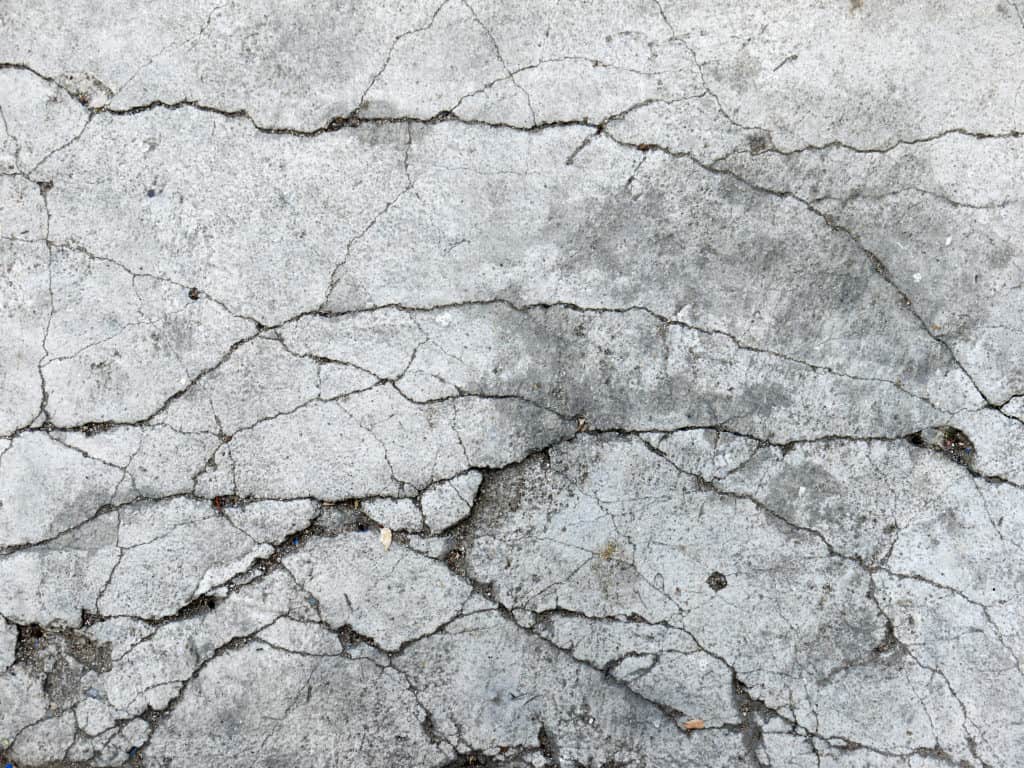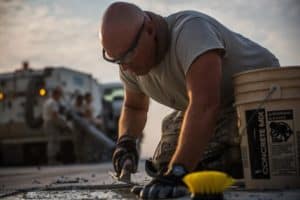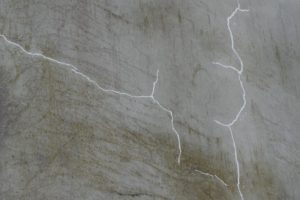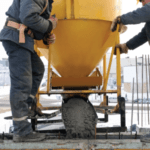Even the most expertly-placed concrete will wear with age. Unfortunately, this often means cracking. While this is a nearly unavoidable reality, repairing cracked concrete isn’t too difficult. Additionally, there are a few things you can keep in mind during concrete placement to help mitigate future cracks.
Repairing Cracked Concrete
Concrete Construction says that if you’ve noticed cracking in your concrete, you’ll want to follow several steps before taking any repair measures:
“Before repairing your next crack, perform a crack evaluation and establish the repair objectives. Decide what type of repair is needed. Choices include a structural repair using epoxy, a route and seal repair using a flexible sealant to accommodate future crack movements, and a hard or semi-rigid filler repair to support crack edges, with or without routing. Also, establish the cosmetic requirements. After choosing the repair material and procedure, follow the manufacturer’s recommendations.”
How to Repair Cracks in Concrete
For wider concrete cracks follow these steps:
- Chisel the crack with a hammer and chisel to widen the base of the crack (make an inverted “V” shape)
- Remove loose pieces and debris with a wire brush and/or pressure washer or hose.
- Clean out water and any remaining with a wet/dry shop vacuum or a brush.
- Follow the manufacturer’s direction to mix the concrete patching compound.
- Use a trowel to fill the crack with the compound. Poke the trowel into the crack to remove air pockets and help work the compound in. Fill the crack up to the surrounding concrete surface.
- Smooth the surface of the patch with the trowel and blend the compound into the surrounding concrete..
- Follow the manufacturer’s directions for curing.
For thin and hairline cracks, here are a few different things you can do:
- Because narrow cracks can be deep (sometimes extending through the entire depth of the slab) we recommend stuffing a foam backer rod into the crack using a screwdriver to a depth of 1/4 inch. This will create a base to actually hold the repair in place.
- Masonry crack elastomeric filler can be applied with a caulking gun
- There are many crack repair products that are available in bottles with an applicator tip.
- Vinyl concrete patching compound can be applied over the crack then smoothed with a trowel (this is the best option for hairline cracks as caulk will peel over time)
What Causes Cracks in Concrete?
The Concrete Network lists five reasons why concrete cracks: excess water in concrete mix, rapid drying of concrete, improper strength concrete poured, lack of control joints, and poor ground conditions before pouring.
Excess water in concrete mix: Concrete shrinks as it dries thanks to the water within the concrete mix evaporating. Though water is an important part of the concrete mixture, too much water will create a “soupy” concrete mix. When the water evaporates, the remaining concrete shrinks to maintain its strength. According to the Concrete Network, “concrete slabs can shrink as much as 1/2 inch per 100 feet. This shrinkage causes forces in the concrete which literally pull the slab apart. Cracks are the end result of these forces.”
The best way to mitigate cracking of this type from happening is to be careful with how much water is added to your concrete mix. A low water-to-cement ratio will go a long way in preventing cracking.
Concrete will often not be able to achieve its maximum strength if it cures too fast. Hydration is the chemical reaction that allows the cement mixture to absorb water, changing from a liquid mixture into a solid slab. This process can take days, even weeks to become stiff enough to achieve desired strengths. Using a concrete curing blanket can allow less impact from external variables that affect concrete drying.
Improper strength of concrete poured: Not all cement mixes are created equally. Different mixes suit different purposes. You can bet that the concrete slab you poured to make the kids’ basketball court is a different strength than the Normandy bunkers stormed by the Allies on D-Day. Pouring the wrong strength of concrete can set you up for cracking. Check with your concrete provider to ensure you’re using the right strength of concrete for your project.
Lack of control joints: Control joints let you choose where the cracking occurs. By allowing for spacing between concrete slabs, you can make sure cracks happen in straight lines and don’t spread due to temperature fluctuations and movement.
When control joints aren’t used, cracking will happen in the most natural way possible with no direction from you. Cutting control joints must be done within 12 hours of pouring concrete, or as soon as the concrete has hardened.
Poor ground conditions: Do not pour concrete on frozen ground. The poured concrete will bind to the ice inside of the frozen soil, and will become unbound once the ice melts. If you have to pour concrete in cold weather conditions, use a ground thawing blanket to get ground surfaces to the right temperature. This will ensure proper joining of ground and cement layers. The ground should also be dry, so make sure you’re not pouring concrete into a puddle or saturated soil.
Cracking Impacts Concrete
Structural integrity is what concrete is all about. Properly evaluating the impact of cracking can help you decide if your structure is sustainable, or if you need to replace that part of the project with another concrete pour. Opting to repair your concrete is feasible only once it’s been confirmed there are no structural issues.
Cracking: It’s Going to Happen
Though repairing cracking will allow for longer-lasting strength for your concrete, mitigating excessive cracking from happening in the first place is best. It can’t be stopped, but it can be controlled. Refer to the above guide next time you’re on a concrete job to make sure you have all your concrete cracking bases covered.
A Little Help from Powerblanket
While most concrete projects are planned for warmer weather, sometimes repairing cracked concrete can’t wait that long. Unfortunately, concrete cures best in higher temperatures. Powerblanket concrete blankets provide the warm environment concrete needs to quickly reach its optimal strength., even during cold winter months.
Cure your concrete faster and better in cold weather conditions with Powerblanket.








